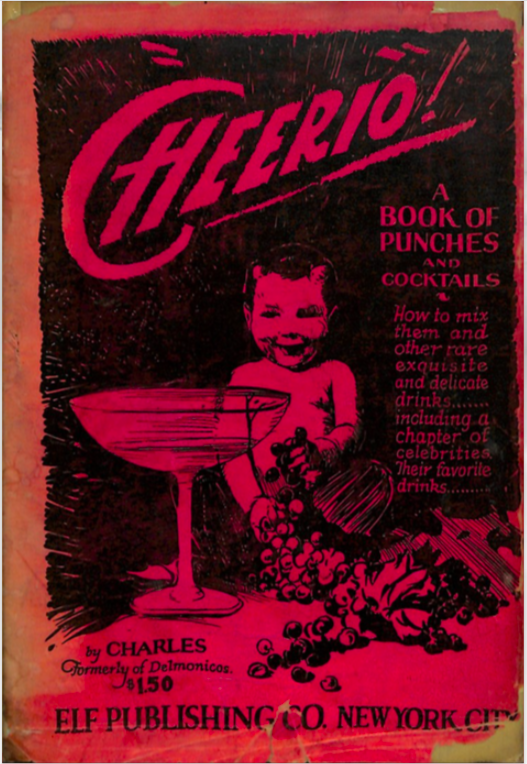
Where do the hipster mixologists of Tokyo, Mexico City and Brooklyn take their inspiration?
If not from the Exposition Universelle des Vins et Spiritueux’ free collection of digitized vintage cocktail recipe books, perhaps they should start.
An initiative of the Museum of Wine and Spirits on the Ile de Bendor in Southeastern France, the collection is a boon to anyone with an interest in cocktail culture …ditto design, illustration, evolving social mores…
1928’s Cheerio, a Book of Punches and Cocktails was written by Charles, formerly of Delmonico’s, touted in the introductory note as “one who has served drinks to Princes, Magnates and Senators of many nations”. No doubt discretion prevented him from publishing his surname.
Charles apparently abided by the theory that it’s five o’clock somewhere, with drinks geared to various times of day, from the moment you “stagger out of bed, groggy, grouchy and cross-tempered” (try a Charleston Bracer or a Brandy Port Nog) to the midnight hour when “insomnia, bad dreams, disillusionment and despair” call for such remedies as a Cholera Cocktail or an Egg Whiskey Fizz.
As noted on the cover, there’s a section devoted to favorite recipes of celebrities. These bigwigs’ names will likely mean nothing to you nearly one hundred years later, but their first person reminiscences bring them roaring back to theatrical, boozy life.
Here’s celebrated vaudevillian Trixie Friganza:
In that nautical city of Venice, I first made the acquaintance of a remarkably delicious drink known as ‘Port and Starboard’. Pour one half part Grenadine or raspberry syrup in a cordial glass. Then on top of this pour one half portion of Creme de Menthe slowly so that the ingredients will not mix. Dear old Venice.
Indeed.
Presumably any cocktail recipe in the EUVS’s vast collection could be adapted as a mocktail, but Charles gives a deliberate nod to Prohibition with a section on alcohol-free (and extremely easy to prepare) Temperance Drinks.
Don’t expect a Shirley Temple – the triple threat child star was but an infant when Cheerio was published. Expand your options with a Saratoga Cooler or an Oggle Noggle instead.
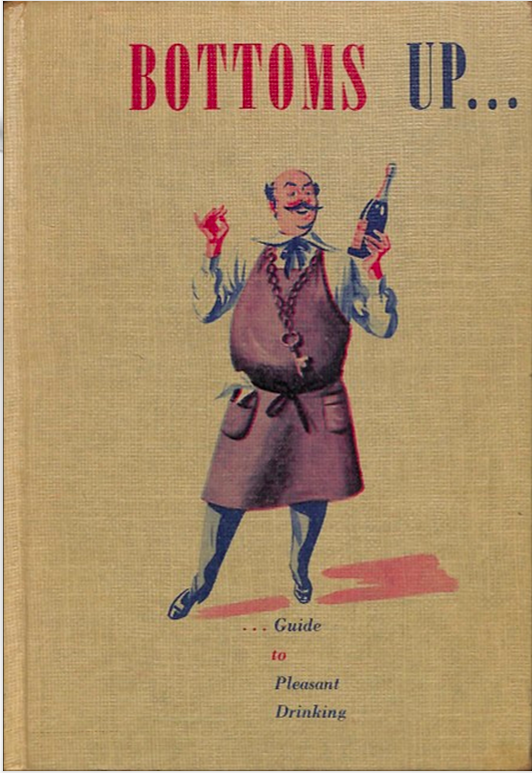
Before attempting to recite the poem that opens 1949’s Bottoms Up: A Guide to Pleasant Drinking, you may want to slam a couple of Depth Bombs Cocktails or a Merry Widow Cocktail No. 1.
In an abstemious condition, there’s no way this ditty can be made to scan…or rhyme:
The Advent of the Cocktail
A lonely, abandoned jigger of gin
Sat on a table top. “Alas”, cried he,
“Who will join me?” And he tried a friendly grin.
Came a pretty youth, Mam’selle Vermouth,
Who was bored with just being winey.
Said she to Sir Gin: “You’d be ever so nice
With Olive and Ice. And so they were Martini.
The cocktail recipes are solid, throughout, however, as one might expect from a book that doubled as an ad for sponsor First Avenue Wine and Liquor Corporation – “for Liquor…Quicker.”
We’ve yet to try anything from the “wines in cookery” section – but suspect that sturdy fare like Potato Soup and Baked Beans could help sop up some of the alcohol, even if contains some hair of the dog…

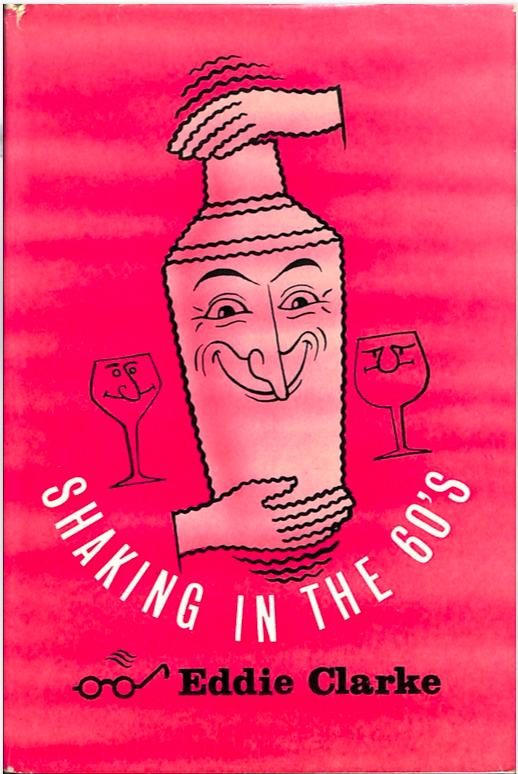
Shaking in the 60’s author Eddie Clark’s previous titles include Shaking with Eddie, Shake Again with Eddie and 1954’s Practical Bar Management.
Clark, who served as head bartender at London’s Savoy Hotel, Berkeley Hotel and Albany Club, gets in the swinging 60s spirit, by dedicating this work to “all imbibing lovers.”
William S. McCall’s decidedly boozy illustrations of elephants, anthropomorphized cocktail glasses and scantily clad ladies contribute to the festive atmosphere, though you probably won’t be surprise to learn that some of them have not aged well.
Shaking in the 60’s boasts dozens of straight forward cocktail recipes (the Beatnik the Bunny Hug and the Monkey Hugall feature Pernod), a surprisingly serious-minded section on wine, and a couple of pages devoted to non-alcoholic drinks.
If your child turns up their nose at Clark’s Remain Sober, serve ‘em an Albermarle Pussycat.
Clark also draws on his professional expertise to help home bartenders get a grip on measurement conversions, supply lists, and toasts.
So confident is he in his ability to help readers throw a truly memorable party, he includes a dishy party log, that probably should be kept under lock and key after it’s been filled out. We imagine it would pair well with the Morning Mashie, another Pernod-based concoction dedicated to “all those entering the hangover class.”
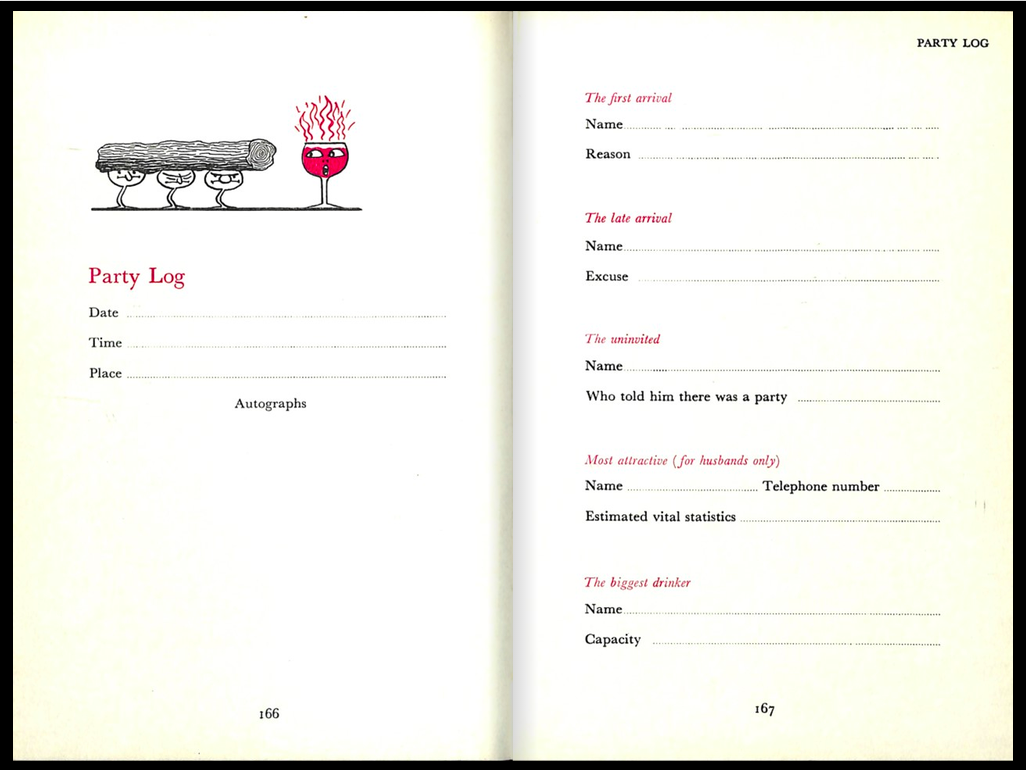
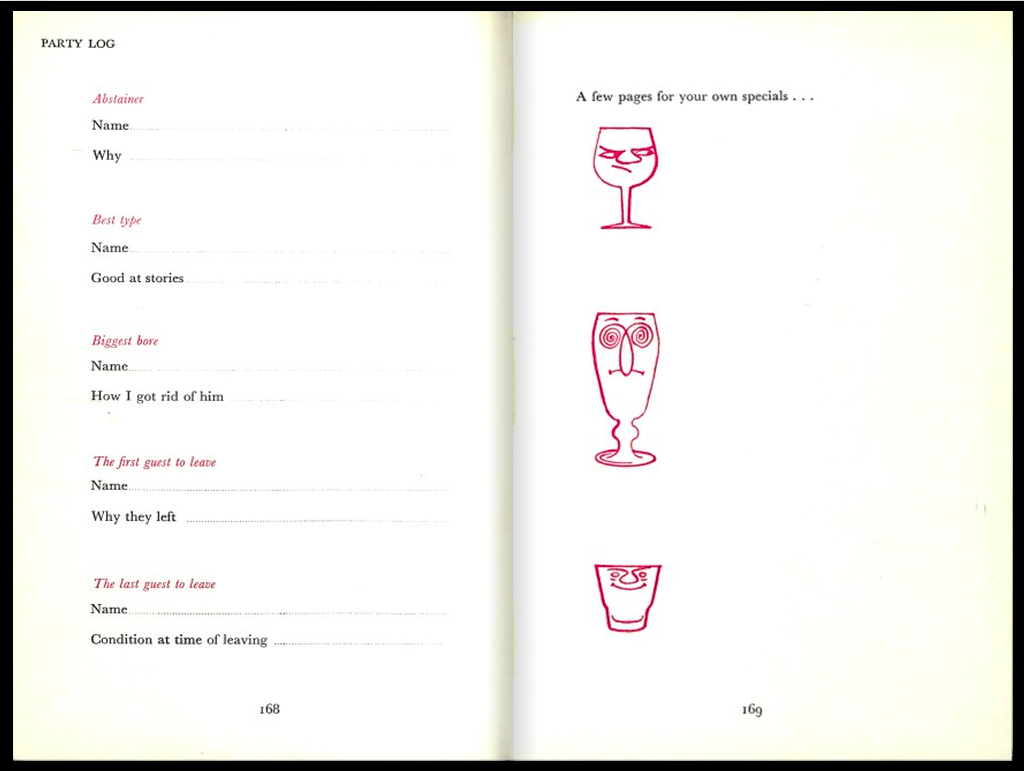
Delve into the Exposition Universelle des Vins et Spiritueux’ free collection of digitized vintage cocktail recipe books from the 1820s through the 1960s here.
Related Content:
A Digital Library for Bartenders: Vintage Cocktail Books with Recipes Dating Back to 1753
An Archive of 3,000 Vintage Cookbooks Lets You Travel Back Through Culinary Time
Ayun Halliday is an author, illustrator, theater maker and Chief Primatologist of the East Village Inky zine. Follow her @AyunHalliday.
Explore Thousands of Free Vintage Cocktail Recipes Online (1705-1951) is a post from: Open Culture. Follow us on Facebook and Twitter, or get our Daily Email. And don't miss our big collections of Free Online Courses, Free Online Movies, Free eBooks, Free Audio Books, Free Foreign Language Lessons, and MOOCs.
from Open Culture https://ift.tt/2XBx097
via Ilumina
Comments
Post a Comment